The push/pull/legs split program is one of the best body parts splits you can employ to grow muscle once you've progressed past the beginner's stage.
The push/pull/legs split is one of the most basic, long-lasting, and well-known fitness routines. And, providing it's done correctly, it's also incredibly effective.
So, in this blog article, I'll go through what a push/pull/legs split entails and why it's a good technique to train. I'll also provide you with a sample training plan that you may use in the gym.
What Is The Push Pull Legs Split Routine?
The push/pull/legs split is a straightforward workout approach that divides your body into three halves. After that, each portion is trained on its day.
All of the upper body pushing muscles, such as the chest, shoulders, and triceps, are worked out in the "push" workout.
All of the upper body pulling muscles, such as the back and biceps, are worked out in the "pull" workout.
And the "legs" workout targets the entire lower body, including the quadriceps, hamstrings, calves, and abs.
These three workouts are then rotated across as many weekly training sessions as you choose.
If you can only go to the gym three days a week, for example, you can do each workout on its own designated day once a week, such as Monday, Wednesday, and Friday. However, this is not the best method to do it because it implies that each body component is only trained once a week, which is not ideal for muscle growth (though it is acceptable for a maintenance program).
So, instead of exercising four times a week, you should train four times a week, alternating the workouts. It makes no difference whatever days you pick as long as you don't do more than two days in a row.
Another option is to undertake a rotating five-day cycle, in which each workout is spread out over five days. As a result, you'd train 2 on, 1 off, 1 on, 1 off, and so on. This is arguably the greatest method because it ensures that each body component is trained once every five days, which is ideal for the more experienced trainee. However, because your training days are continuously changing, you'll need a rather flexible schedule to make this work.
The Push/Pull/Legs Routine
The Push Workout
Exercise 1: Incline Barbell Bench Press
The incline barbell bench press is the first exercise we'll discuss in a normal push session for mass. The clavicular head of the pecs, which makes up the bulk of the upper chest, is targeted with this exercise. For most people, the clavicular head of the pecs is a weak spot. Nonetheless, is essential for obtaining a well-developed chest.
Exercise 2: Standing Dumbbell Shoulder Press
After that, we'll do a standing dumbbell shoulder press. This workout is for strengthening the shoulders. However, the front and lateral regions receive the most attention.
And, according to the results of a 2013 EMG analysis, the standing dumbbell press is superior to its barbell or sitting counterparts. When compared to the other three shoulder pressing choices, the standing dumbbell press elicited considerably greater front, side, and rear delt activation.
Exercise 3: Paused Flat Dumbbell Press
The flat dumbbell press will now be used to target the sternocostal head of the pecs. The mid-chest, to be precise. This is significant since, earlier in the prescribed push pull legs routine, we prioritized the upper chest by employing an inclination.
Exercise 4: Lean-Away Dumbbell Lateral Raise
After that, we'll go on to lateral raises to focus on the side delts. Although they were worked to some amount during the standing shoulder press, lateral raises have been proven to activate the side delts significantly more effectively. And, considering the necessity of building this muscle for a wider, more powerful-looking physique, it's a smart idea to incorporate it in this push pull legs program.
Exercise 5: Seated Decline Cable Flies W/ Supination
Then, with a sitting decline cable fly, go back to the chest. This exercise will be used to target the lower chest region, which hasn't gotten much attention. It is, nevertheless, necessary to grow in order to shape the lower and outer breast regions.
Exercise 6: Incline Dumbbell Overhead Extensions
Finally, we'll do incline dumbbell overhead extensions to strengthen the triceps. We'll be able to properly focus the long head of the triceps thanks to the increased shoulder flexion of this exercise.
Which is crucial for us to complete in this workout. That's because it accounts for the majority of your triceps' bulk. When compared to the other triceps heads, it has received little treatment from our earlier pushing activities.
The Pull Workout
Exercise 1: Pull-Ups
Pull-ups are the first exercise we'll cover in this pull workout. Pull-ups are one of the finest workouts for increasing the width of your back by targeting the lats. A study published by the American Council of Exercise found that the pull-up had the highest lats activation when compared to seven other back workouts. Furthermore, studies have revealed that the pull-up activates a variety of additional back and arm muscles to a great degree. As a result, it's an excellent overall back builder and should be a regular part of your workout.
Exercise 2: Barbell Row
It's now time to change the angle of pull. With the barbell row, we'll progress to a horizontal pulling movement. This exercise has been proven to be an excellent total back builder in studies. In addition, it is particularly beneficial for mid-back thickness and lower-back development. This is because it activates these areas more effectively than other typical back exercises.
Exercise 3: Reverse Grip Lat Pulldowns
We'll then return to a vertical pulling movement. With the lat pulldown, we can do this. This works the lats and other back muscles even more.
We'll be transitioning to a closer underhand grip instead of the wide standard overhand grip. The reason for this is that anatomical research has revealed that the lats are divided into two parts: upper and lower. Which can be engaged more effectively during your back training.
Exercise 4: Chest Supported Rear Delt Row
Then, similar to the barbell row, we'll return to a horizontal rowing movement. However, it should be done in such a way that it emphasizes the back delts to a much higher extent.
We must do so in this workout. This is because most people overlook their rear delts. In comparison to the rest of their shoulder, it's also undeveloped.
Although standard rowing exercises engage the rear delts, we can increase their engagement by adjusting our elbow position while rowing.
Because we know that when we row with our elbows tucked closer to our sides, the lats are in a more beneficial biomechanical posture. The rear delts are now in a more advantageous position if we expand our grip to allow us to flare the elbows out more as we pull (as in the rear delt row). The participation of the lats is also reduced.
Exercise 5: Close Grip Barbell Curl
After that, it's time to do some biceps isolation exercises. But we'll focus on the long head of the biceps in particular.
That's because the biceps' short head has already gotten the lion's share of the attention in our prior pulling actions.
The close-grip barbell curl is a fantastic exercise for this because we can put the outer head or long head of the biceps in a more favorable position than the inner or short head by keeping the elbows close to the body and utilizing a smaller grip that's within shoulder-width. Which you'll almost certainly sense right away.
You'll want to raise with your pinkies as you curl the weight up to increase its involvement even further. During each rep, make sure to move through the whole range of motion.
Exercise 6: Face Pulls (Kneeling + Lying)
Finally, we'll do face pulls to complete the workout. The back delts, mid and lower traps, and our numerous rotator cuff muscles will all benefit from this workout.
We'll need to do two versions of the face pull, though.
You should do the first two sets either kneeling or standing. In the conclusion, focus on externally rotating the shoulder so that you're in a biceps flexing position. This helps you to strengthen the rotator cuffs to their full potential.
The Legs Workout
Exercise 1: Barbell Squats
It should come as no surprise that the first exercise is the most difficult. It's the barbell squats, which have been proven to be an excellent workout for growing lower-body muscle.
For example, a group of trained volunteers was asked to practice exclusively the back squat as their lower body training for 12 weeks in a study published in the International Journal of Sports Medicine in 2020.
Exercise 2: Hip Thrusts
Following that, we'll do barbell hip thrusts. This exercise aims to strengthen the glutes while also involving the hamstrings.
This exercise can be thought of as a great complement to the squat. Why? Because they've been shown in studies, such as this 2015 EMG analysis, to stimulate these crucial posterior chain muscles more effectively than the squat.
Exercise 3: Split Squats (2 sets regular, 2 sets contralateral)
After that, it's time to do split squats. This workout focuses on the quadriceps even more. However, the glutes and hamstrings play a significant role as well.
At least one unilateral activity that trains one leg at a time should be included in this regimen. As a result, imbalances do not develop over time.
Exercise 4: Glute Ham Raise
Last but not least, we'll do the glute-ham raises. The hamstrings are emphasized in this exercise. We're including them because they haven't been effectively emphasized in previous movements.
A fantastic exercise to do so is the glute-ham lift. Why? Because, when compared to other frequent hamstring movements, it has been demonstrated in EMG analyses like this one by McAllister and colleagues to elicit the most activation of the various hamstring muscles. For example, the leg curl and Romanian deadlift.




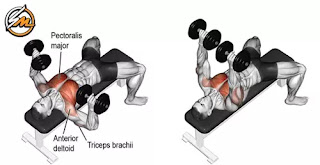

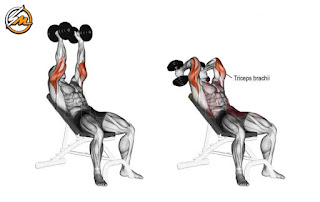
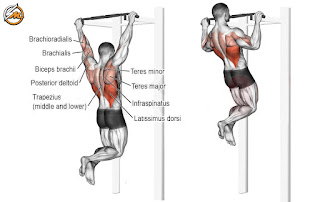

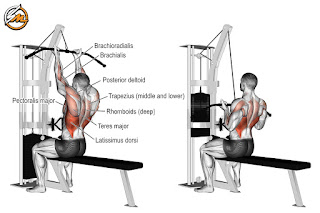



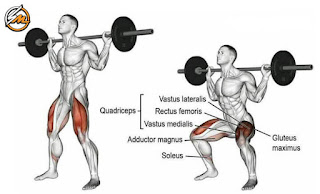
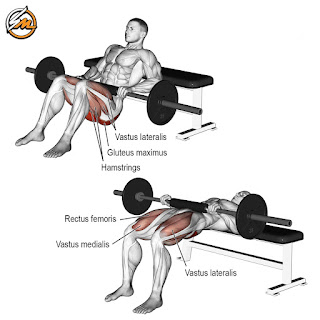
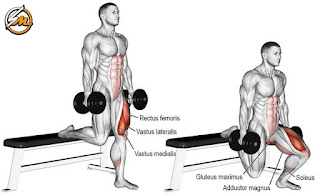






0 Comments